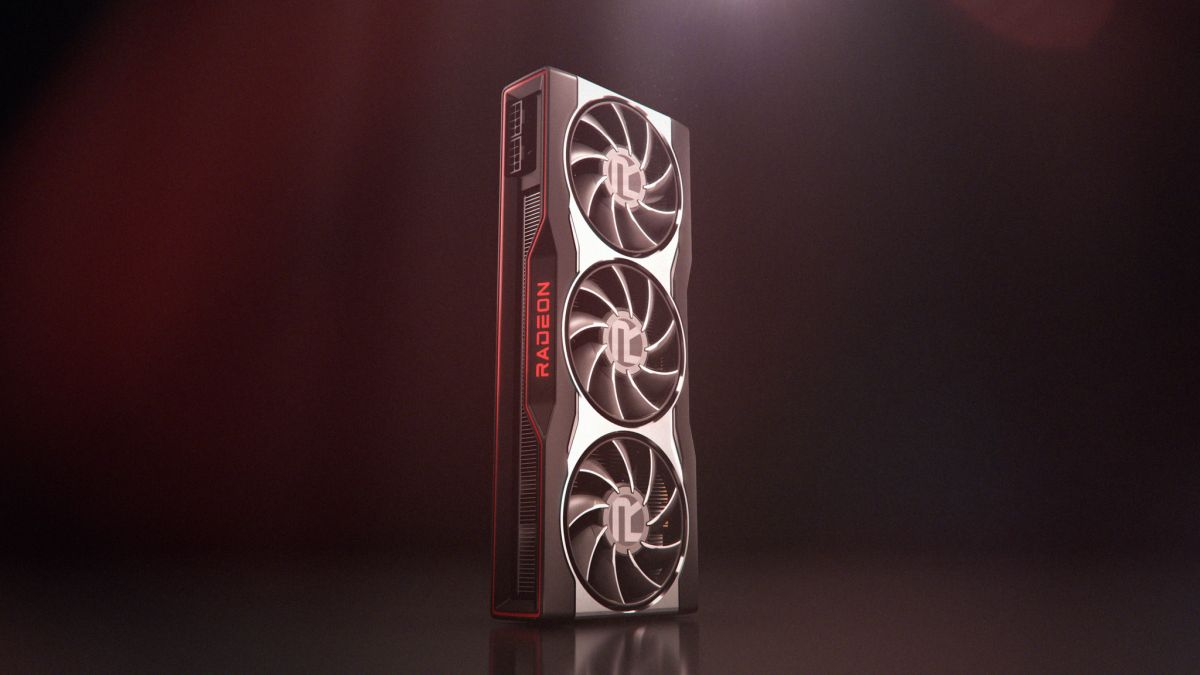AMD Big Navi has finally been unveiled in all its glory, with Team Red showing off the Radeon RX 6800 XT, Radeon RX 6800 and the mighty Radeon RX 6900 XT which will take on Nvidia’s RTX 3080, RTX 3090 and RTX 3070 GPUs.
Seeing as these RTX 3000 GPUs tout impressive performance, graphics card enthusiasts have high expectations of AMD’s long-rumored Nvidia killer. That’s especially with CEO Lisa Su dropping performance hints earlier in October that points towards AMD GPUs returning to the high end.
AMD even showed off benchmark results of its high-end 12-core Ryzen 9 5900X processor from the AMD Ryzen 5000 line paired with an RDNA 2 graphics card, and they seem pretty impressive.
And now that AMD has given us more details about its Big Navi cards, and the RDNA 2 tech they run on, we have a much better idea of what kind of GPUs we’re getting when they launch.
RDNA 2 is also the graphics architecture behind the Xbox Series X and PlayStation 5, so we have a good idea of what kind of performance those next-gen consoles will bring.
Cut to the chase
- What is it? AMD’s high end graphics cards
- When is it out? November 18
- What will it cost? Starting at $579 (around $440, AU$820) for the Radeon RX 6800

AMD Big Navi release date
It seems like AMD Big Navi release date rumors have been everywhere since the very beginning of time – or at least since Navi rumors first started appearing in late 2018. Initially, we had heard that Big Navi would be launching at Computex – but Computex didn’t even happen.
Days after Nvidia’s announcement of the RTX 3080 however, AMD teased the launch of both its Zen 3 desktop processors and RDNA 2 graphics cards, with the latter expected to come in right before Halloween on October 28 at 12pm EST – just a couple weeks before the November 10 launch of the Xbox Series X that the graphics architecture will be powering.
On the day, AMD announced that the AMD Radeon RX 6800 and Radeon RX 6800 XT will launch on November 18. Meanwhile, the Radeon RX 6900 XT will arrive a little later on December 8.

AMD Big Navi price
AMD has traditionally enjoyed a reputation for providing more affordable products than their competition.
And to back this up, we’d like to point to the AMD Radeon VII. With this graphics card, AMD genuinely provided performance that was pretty close to what the Nvidia GeForce RTX 2080 provided at the time, while sitting with a price tag of $679 (about £540, AU$970), which was very close to the RTX 2080’s $699 (£649, AU$1,119) price tag at the time.
Now, since launching its Navi lineup, AMD has put some price pressure on Nvidia’s mid-range lineup, most notably baiting Nvidia into lowering its prices on its Super cards at the last minute. So, we might see something that challenges the RTX 2080 Ti for maybe $200 (£200, AU$300) less than that card’s MSRP, but don’t expect graphics card prices to drop to where they were before Nvidia Turing made everything more expensive.
So, AMD’s Big Navi lineup starts at $579 (around $440, AU$820) for the Radeon RX 6800, while the AMD Radeon RX 6800 XT costs $649 (around £500, AU$1,000) and the AMD Radeon RX 6900 XT will cost $999 (£770, about AU$1,400).
With the AMD Radeon RX 6800 XT and the AMD Radeon RX 6900 XT, AMD has undercut Nvidia’s rival RTX 3080 and RTX 3090 cards, respectively.

AMD Big Navi specs and features
During AMD’s October 8 Ryzen 5000 reveal, Team Red hinted that the next-generation RDNA 2 graphics card will be able to get high framerates at 4K in games like Borderlands 3 and Gears 5.
A recent leak has supposedly detailed everything you would want to know about the upcoming AMD Big Navi specs. The AMD Radeon RX 6900 XT – again, just a rumored name – will supposedly have 5,120 SPs, 16GB of GDDR6 VRAM on a 256-bit memory bus, and according to an even more recent leak, will have a Game Clock of 2.4GHz.
A quick side note on that: Rather than just listing a Max Boost Clock and a Base Clock like Nvidia does with its graphics cards, AMD clock speeds are separated into a Base Frequency, a Game Frequency and a Boost Frequency. The Game Frequency is simply the clock speed the graphics card will typically sit at during gameplay, where AMD’s Boost Frequency is the peak clock speed, and will only typically happen for like a second here and there.
But, of course, clock speed, especially with graphics cards, doesn’t mean everything, and is only one part of an incredibly complex equation for gaming performance.
In the end, these are the specs we got:
AMD Radeon RX 6800 specs:
- 60 compute units
- 1,815MHz game clock
- 2,150MHz boost clock
- 128MB Infinity cache
- 16GB GDDR6 memory
- 250W total board power
AMD Radeon RX 6800 XT specs:
- 72 compute units
- 2,015MHz game clock
- 2,250MHz boost clock
- 128MB Infinity cache
- 16GB GDDR6 memory
- 300W total board power
AMD Radeon RX 6900 XT specs:
- 80 compute units
- 2,015MHz game clock
- 2,250MHz boost clock
- 128MB Infinity cache
- 16GB GDDR6 memory
- 300W total board power
These Big Navi GPUs will feature “Rage Mode” for one-click overclocking, along with AMD Smart Access Memory, and when paired with an AMD Ryzen 5000 processor, these features are, AMD promises, able to give some serious boosts to game performance.
